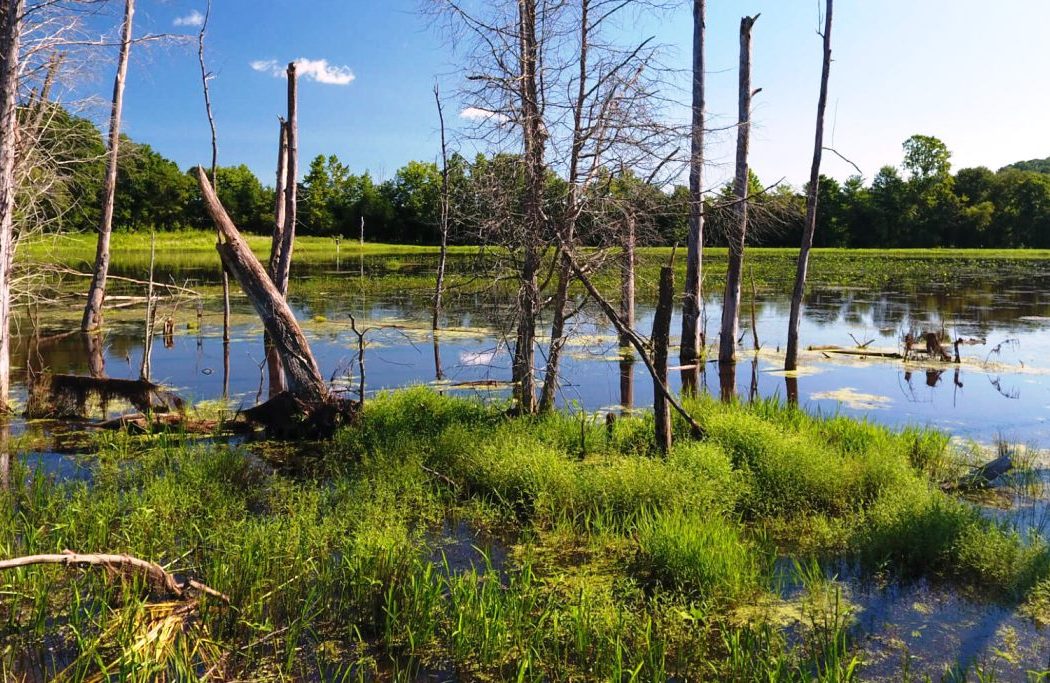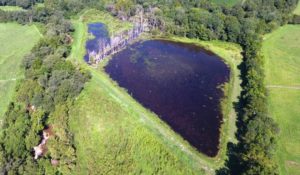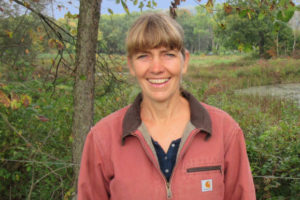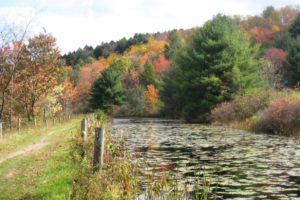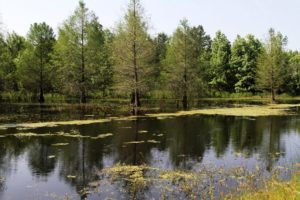Since 1983, the Chesapeake Bay Program (CBP) has led and directed the restoration of the Chesapeake Bay. The Bay Program works with dozens of partners, including federal and state agencies, local governments, non-profit organizations and academic institutions.
This partnership model has been recognized and emulated around the world and has served as the basis for landmark cooperative agreements, cutting-edge scientific research and unprecedented goals and deadlines for restoring the Chesapeake Bay ecosystem.
CBP’s Wetlands Work program encourages landowners in the Chesapeake Bay watershed to restore wetlands on their property and accelerate the Chesapeake Bay Program’s progress toward its goal to create or reestablish 85,000 acres of wetlands in the region by 2025.
Here are four success stories from the Wetland’s Work program:
W.J. Davis
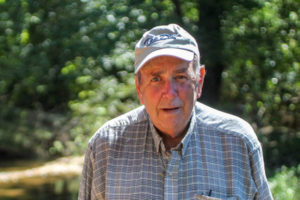 W.J. Davis owns a 21-acre wetland that was restored under the Natural Resources Conservation Service’s Agricultural Conservation Easement Program.
W.J. Davis owns a 21-acre wetland that was restored under the Natural Resources Conservation Service’s Agricultural Conservation Easement Program.
W.J. left his hometown of Norfolk, Virginia, for rural Madison County when he purchased his farm in 1967. At over 500 acres, W.J.’s farm allows him to raise beef cattle and lease cropland to other farmers. It also includes a 21-acre wetland that provides habitat to geese and ducks.
While W.J. was interested in conserving a portion of his property, it was not until he read about the Natural Resources Conservation Service in an agricultural magazine that he realized the agency funds wetland restoration on farms like his in exchange for land rights that will protect the habitat.
In 2014, W.J. enrolled in the Agricultural Conservation Easement Program and began work with a team of wetland planners. Over the course of a year, these wetland planners walked W.J. through the necessary paperwork and the development of a restoration plan. Over the next year, W.J.’s wetland was built.
W.J. speaks highly of the wetland planners he worked with. “They were easy to get along with,” he said. “[The NRCS] sent qualified people that had the same thoughts as I did in terms of conservation.”
In the years since his wetland was restored, W.J. has loved watching the wildlife that visits his property. He leases hunting rights to allow for the recreational hunting of deer, rabbit and squirrel, but doesn’t let anyone hunt the birds. The birds are W.J.’s favorite visitors, and he is glad his property provides a protected space for waterfowl.
While the NRCS funded the restoration work and compensated W.J. for the rights to his property’s permanent easement, W. J. insists the financial incentives were not what motivated him to pursue wetland restoration. For him, it’s always been about the conservation. “I love the beauty of it,” he explained. “It’s hard to put in words.”
Carol DeYoung
Carol DeYoung owns 100 acres of land and manages 125 more in southern New York. She and her family raise beef cattle and pigs on the property they own and sell hay grown on the land they manage.
When Carol decided to install fences to keep her cattle out of her streams, she called her local Farm Service Agency office for help.
In 2006, Carol worked with the Farm Service Agency and the Natural Resources Conservation Service to develop a 40-acre conservation project on her property, including streamside fencing, riparian buffers and open-water wildlife habitat.
She enrolled her land in the Conservation Reserve Program, which covers 75 to 90 percent of a project’s cost (depending on the conservation practices put in place) and provides an annual rental payment.
Carol signed a 15-year contract, and plans to re-enroll at the end of her term.
A wide variety of wildlife visit Carol’s property, including ducks, minks and muskrats. “During migration season, we have a phenomenal number of [bird] species flying through,” Carol said.
David works to restore wetlands as a private contractor, and said growing up here had a huge influence on his life. Both mother and son love being able to walk out their back door to enjoy the wildlife that call this property home.
Mark Furr
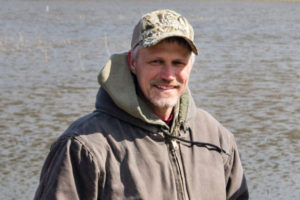 Mark Furr turned low-yield cropland into a waterfowl-friendly wetland through the Ducks Unlimited Choptank Watershed Wetland Restoration Program.
Mark Furr turned low-yield cropland into a waterfowl-friendly wetland through the Ducks Unlimited Choptank Watershed Wetland Restoration Program.
In 2017, Mark contacted Ducks Unlimited in hopes of restoring a wetland on his 397-acre tract of farmland on Maryland’s Eastern Shore.
The wetland was low-yield from an agricultural standpoint, and Mark—a hunter and birdwatcher—wanted to improve the quality of the land for waterfowl, wild turkey, bald eagles and deer.
Mark’s first experience with Ducks Unlimited occurred during a seminar the nonprofit organization held to introduce Eastern Shore landowners to its Choptank Watershed Wetland Restoration Program.
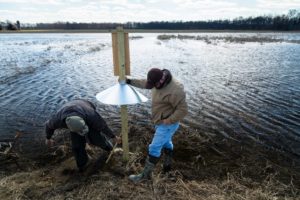
Mark Furr, left, and Jake McPherson from Ducks Unlimited install a wood duck nest box at a restored wetland on Mark’s Farm. (Photo by Will Parson/Chesapeake Bay Program)
Five years later, Mark invited Ducks Unlimited to visit his property and determine if he was eligible to participate.
Ducks Unlimited wetland planners surveyed Mark’s site, worked with him to design his wetland and hired a local contractor to build the wetland.
Ducks Unlimited covered all of the costs associated with the project and Mark committed to maintaining the wetland for 15 years.
Mark leases his property to a local farmer who grows corn, soybeans and wheat. Both Mark and the farmer are happy with his new wetland.
Mark is happy because the wetland has brought new species of waterfowl to his land; the farmer is happy because it has raised the water table and made the land more resistant to drought.
Brokke Layton
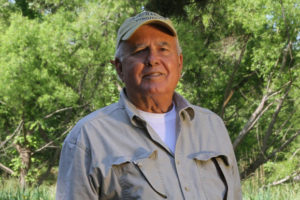 Brooke Layton owns a 30-acre wetland that was restored under the Natural Resources Conservation Service’s Wetlands Reserve Program.
Brooke Layton owns a 30-acre wetland that was restored under the Natural Resources Conservation Service’s Wetlands Reserve Program.
In 2004, the hunter, angler and outdoorsman purchased 70 acres of land in Accomack County, Virginia. Brooke had long hunted on the land, and decided it would be the perfect place to retire. In addition to inheriting a centuries-old farmhouse, Brooke inherited a 30-acre wetland.
The wetland on Brooke’s property was restored by a former landowner under the Natural Resources Conservation Service’s Wetlands Reserve Program. (Today, the agency restores wetlands under the Agricultural Conservation Easement Program.) The voluntary Wetlands Reserve Program helped landowners protect, restore and enhance wetlands on their property, and strived to achieve the greatest wetland functions and optimum wildlife habitat on every enrolled acre.
While Brooke didn’t restore his wetland himself, he has maintained a great relationship with the staff at his local USDA Service Center. For the past five years, he has worked with a soil conservationist who visits his property once a year to check on the health of his wetland.
Brooke manages the water level of his wetland with a device the Natural Resources Conservation Service helped him install in 2007.
Each spring, Brooke floods his wetland with six to nine inches of water, which attracts birds and other wildlife. When the ducklings that inevitably hatch are old enough to fly, Brooke lowers the water level and plants Japanese millet.
His wetland floods again in late September, migratory ducks return in November and millet provides them with food and habitat. Brooke loves to watch the ducklings grow, and says thousands of ducks and geese visit his property each year.
Featured photo (by Green Fin Studio) shows Brooke Layton’s restored wetland.
All text (with minor edits) courtesy of the Chesapeake Bay Program.

